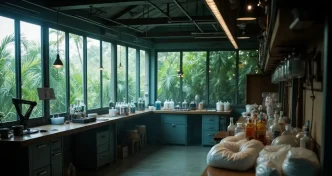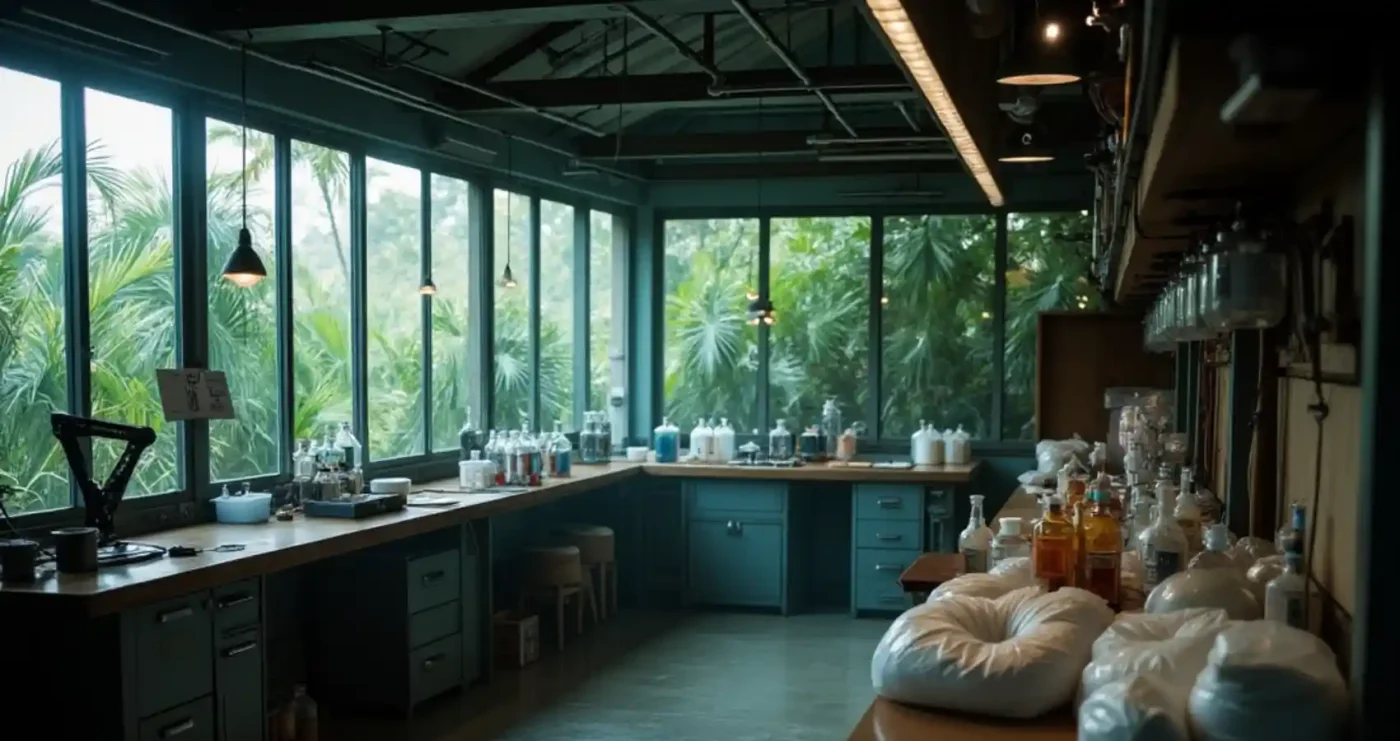At the 2025 Asia-Pacific Forum Against Drugs held in Singapore, experts and policymakers sounded the alarm on the escalating threat of synthetic drugs like fentanyl and methamphetamine, which are becoming a pressing public health crisis across the region. With potency far exceeding traditional narcotics and production costs alarmingly low, these substances are reshaping the drug trade—and its devastating consequences—from Mexico to Southeast Asia.
The Lethal Rise of Synthetic Drugs
British journalist Ioan Grillo, who has spent over two decades covering the drug trade in Mexico, delivered a chilling account of the synthetic drug epidemic at the forum, held at Furama RiverFront Hotel from May 15 to 17. Grillo highlighted the unprecedented lethality of fentanyl, a synthetic opioid classified as a Class A controlled drug in Singapore, which is estimated to be up to 100 times more potent than morphine. In the United States alone, fentanyl claimed 76,000 lives in 2023 and 48,422 in 2024, underscoring its deadly impact.
“Because you’re killing off your customers” Grillo said, explaining why even illegal drug producers are now intentionally diluting fentanyl with other substances or tranquilizers to reduce fatalities. He described a stark shift in the drug landscape, noting that conversations with addicts today are nearly impossible due to their “zombified” state—a far cry from interactions he had two decades ago. “This may be the worst overdose epidemic in history” he warned, pointing to the purity and high dosage potential of modern synthetic drugs.
A Growing Threat in Asia
While fentanyl’s toll has been most visible in North America, its shadow looms over Asia. In March 2025, traces of fentanyl were detected in Malaysia’s sewage systems, a development that Singapore’s Home Affairs and Law Minister K. Shanmugam described as evidence of the threat “coming closer to home.” Addressing attendees at the forum on May 15, Shanmugam emphasized the urgency of regional cooperation to combat this emerging crisis.
Grillo, speaking to reporters on May 14, underscored that synthetic drugs are already a dominant force in Asia’s illicit markets. “If you look at it—the biggest problem in Asia is methamphetamine, and it is a synthetic drug” he said. “Suppliers have found big markets in the Philippines, in Malaysia, and it’s the biggest problem in Singapore.” Annual statistics from Singapore’s Central Narcotics Bureau (CNB) confirm this, revealing methamphetamine as the most commonly abused drug in the city-state in 2024.
The affordability and scalability of synthetic drugs exacerbate their spread. Unlike plant-based drugs such as cannabis, which require cultivation and are subject to environmental constraints, synthetic drugs can be manufactured in clandestine labs at a fraction of the cost. A 2024 report by the United Nations-backed International Narcotics Control Board warned of a “rapid expansion” of these substances, noting that their low production costs translate to higher profits for producers and traffickers, fueling a vicious cycle of supply and demand.
Singapore’s Vigilance and Regional Challenges
Singapore has not been immune to the infiltration of synthetic drugs. In 2021, the CNB uncovered the first known attempt to traffic fentanyl in its pure form into the country, seizing 200 vials containing approximately 20 milligrams of the opioid in a package from Vietnam. While the city-state’s stringent drug laws and proactive enforcement have kept the problem relatively contained, the broader regional landscape paints a more troubling picture.
Methamphetamine, often referred to as “ice” or “yaba” in Southeast Asia, has entrenched itself as a pervasive issue, particularly in countries like Thailand, Malaysia, and the Philippines. The drug’s synthetic nature allows for mass production in remote areas, often in the border regions of Myanmar’s Shan State, part of the notorious Golden Triangle. From there, trafficking networks distribute the drug across the region, exploiting porous borders and high demand in urban centers.
The public health implications are staggering. Synthetic drugs not only cause overdoses but also contribute to long-term physical and mental health deterioration among users. Grillo’s observations from Mexico—where entire communities have been hollowed out by addiction—serve as a cautionary tale for Asia, where rapid urbanization and economic disparities can create fertile ground for drug abuse. If unchecked, experts warn, the region could face an epidemic on par with the crisis in the United States.
Policy Dilemmas: Deterrence vs. Legalization
The forum also spotlighted divergent approaches to tackling the drug problem. Kevin Sabet, a former adviser to the White House Office of National Drug Control Policy and a drug policy scholar, advocated for a localized, comprehensive strategy that prioritizes prevention and recovery. Praising Singapore’s strict drug legislation as an effective deterrent, Sabet cautioned against global movements pushing for softer stances on narcotics. “One of the things I’m extremely worried about is the movement to legalize drugs” he said. “It’s coming from a multibillion-dollar movement that is very smart, calculated, and running in non-governmental organizations around the world.”
Sabet pointed to Thailand’s brief experiment with decriminalizing recreational cannabis in 2022 as a case study in the risks of liberalization. Initially framed as a progressive move with potential medicinal benefits, the policy faced a swift public backlash and was reversed. “Countries should not be swayed by such rhetoric” Sabet urged, arguing that the focus should remain on breaking the global consensus against drug abuse through collaborative, evidence-based efforts rather than simplification or normalization of drug use.
His remarks highlight a broader tension in international drug policy: balancing deterrence with harm reduction. While Singapore’s zero-tolerance approach has yielded results—evidenced by relatively low drug abuse rates compared to regional peers—other nations grapple with systemic challenges, including corruption, underfunded health systems, and societal stigma around addiction. The push for legalization, often backed by well-funded advocacy groups, adds another layer of complexity, as policymakers weigh public health outcomes against economic and political pressures.
Economic Dimensions of the Synthetic Drug Trade
Beyond public health, the synthetic drug trade carries significant economic ramifications. The low cost of production—often requiring only basic chemical precursors and makeshift labs—means that traffickers can undercut traditional drug markets, amassing profits that fuel organized crime. In Southeast Asia, these revenues often support other illicit activities, including human trafficking and arms smuggling, creating a web of criminal enterprises that destabilize communities and strain law enforcement resources.
For governments, the economic burden of combating synthetic drugs is immense. Enforcement operations, border security, and rehabilitation programs demand substantial funding, often diverting resources from other critical areas like education and infrastructure. In Singapore, for instance, the CNB’s annual budget reflects the high cost of maintaining vigilance, while regional neighbors with fewer resources struggle to keep pace. The disparity in capacity underscores the need for coordinated international efforts, a theme echoed repeatedly at the forum.
Looking Ahead: A Call for Unity
As the Asia-Pacific Forum Against Drugs drew to a close, the consensus among attendees was clear: synthetic drugs represent a multifaceted crisis that no single nation can address alone. From fentanyl’s lethal grip to methamphetamine’s pervasive spread, the challenges are as diverse as the region itself. For Singapore, a hub of innovation and governance, the forum served as both a warning and a call to action, reinforcing the importance of vigilance and collaboration in safeguarding public health.
Yet questions linger about the path forward. Can deterrence alone stem the tide of synthetic drugs, or must the region explore new frameworks for prevention and recovery? As traces of fentanyl creep closer to Southeast Asia’s shores, the urgency to find answers has never been greater.















